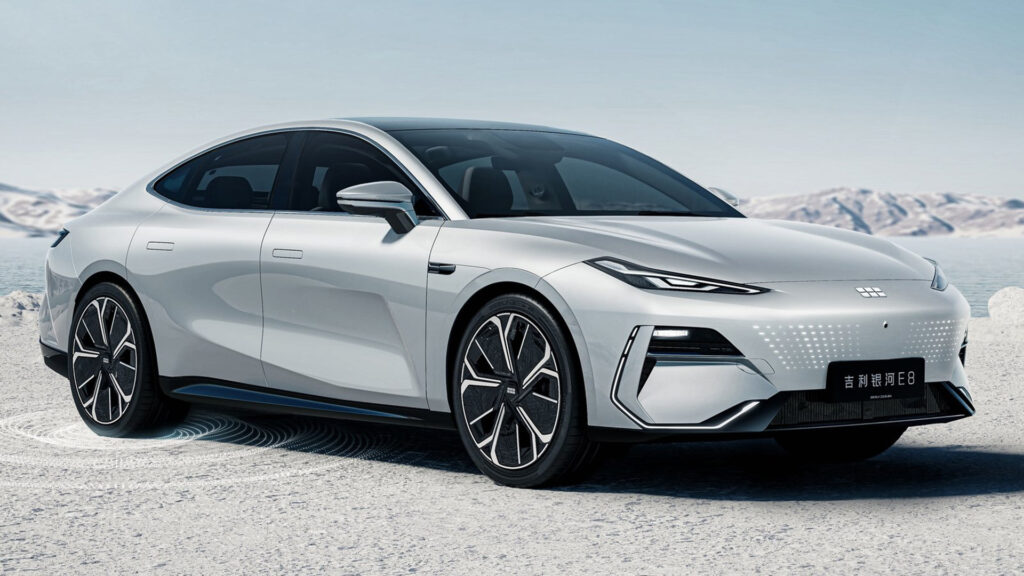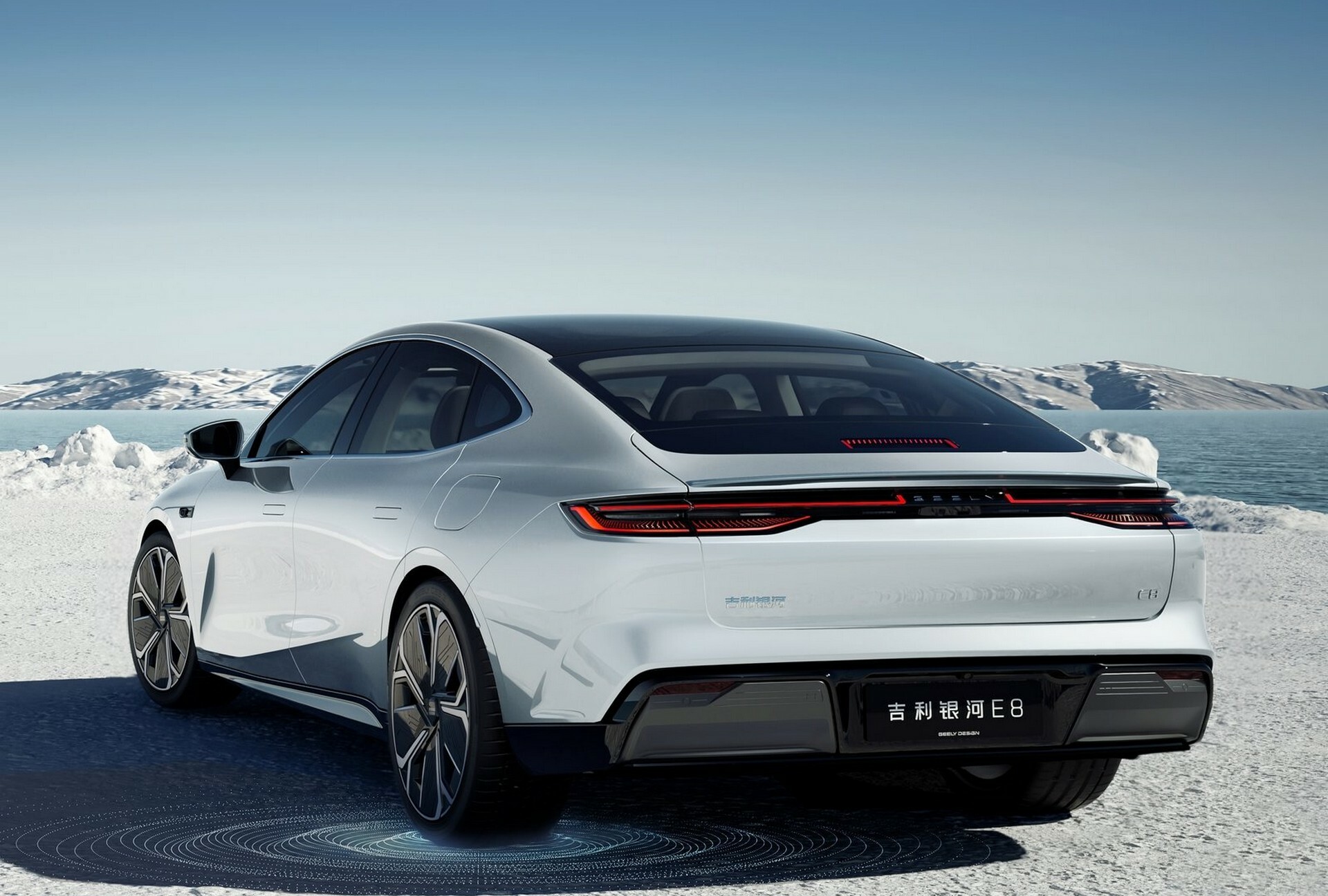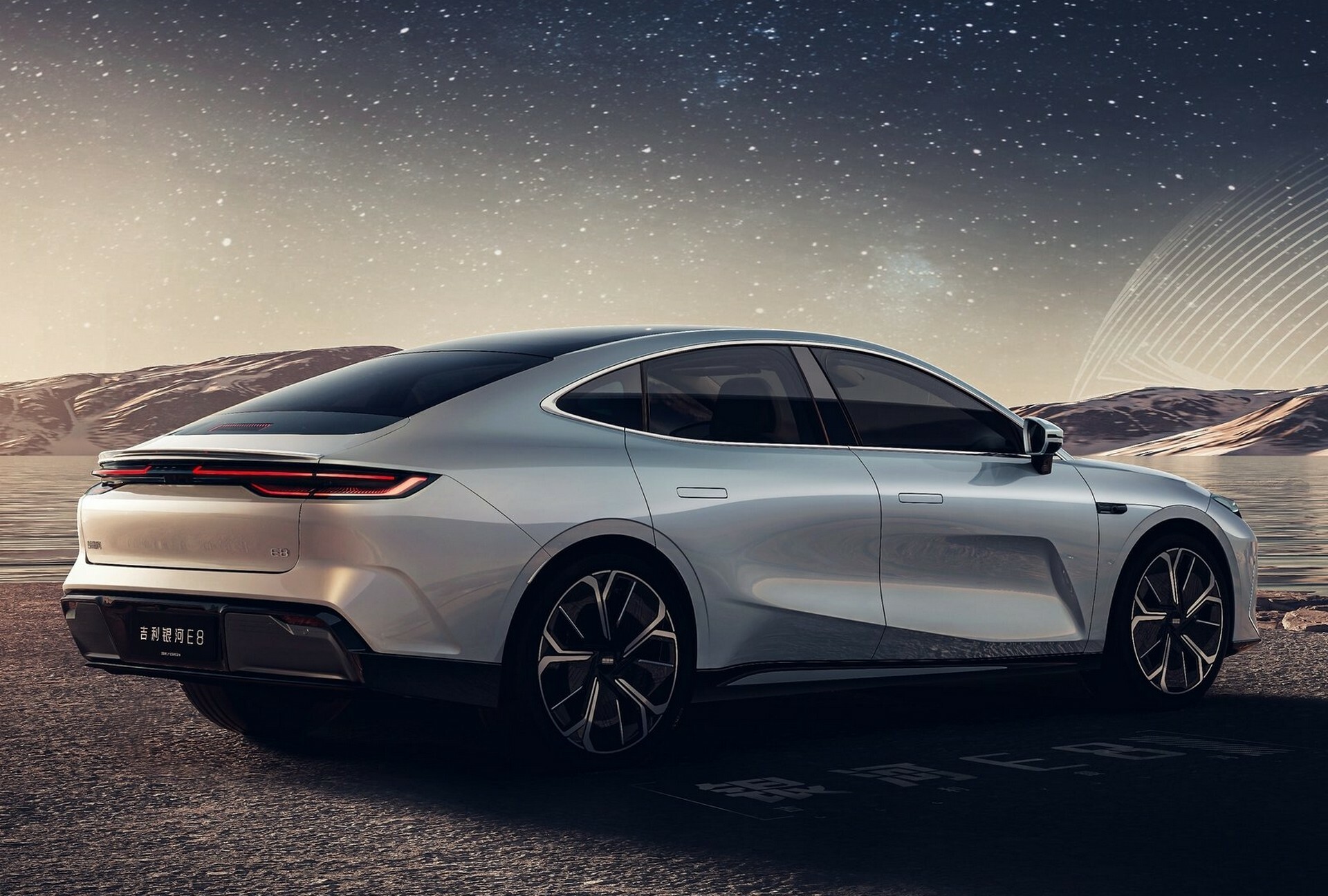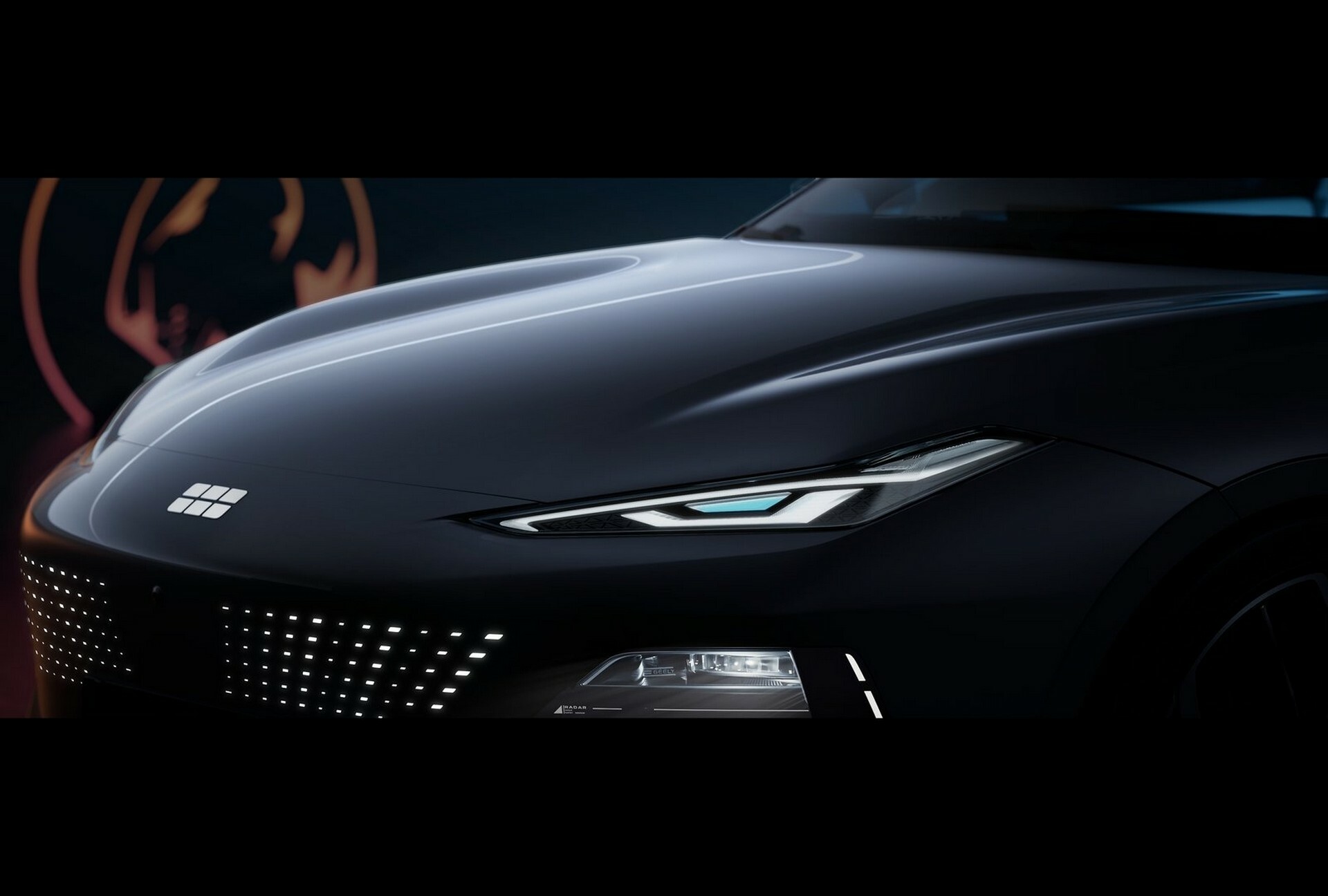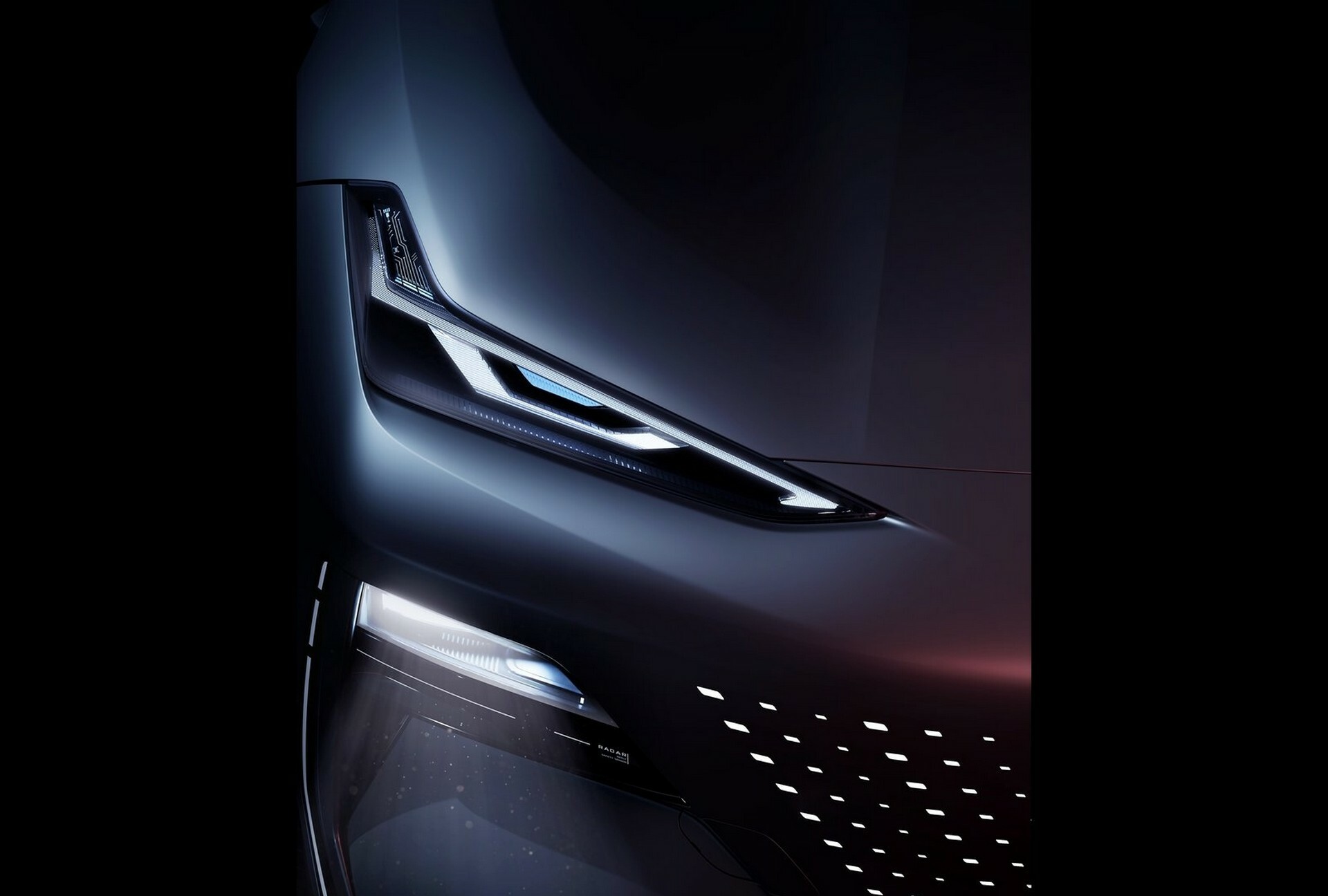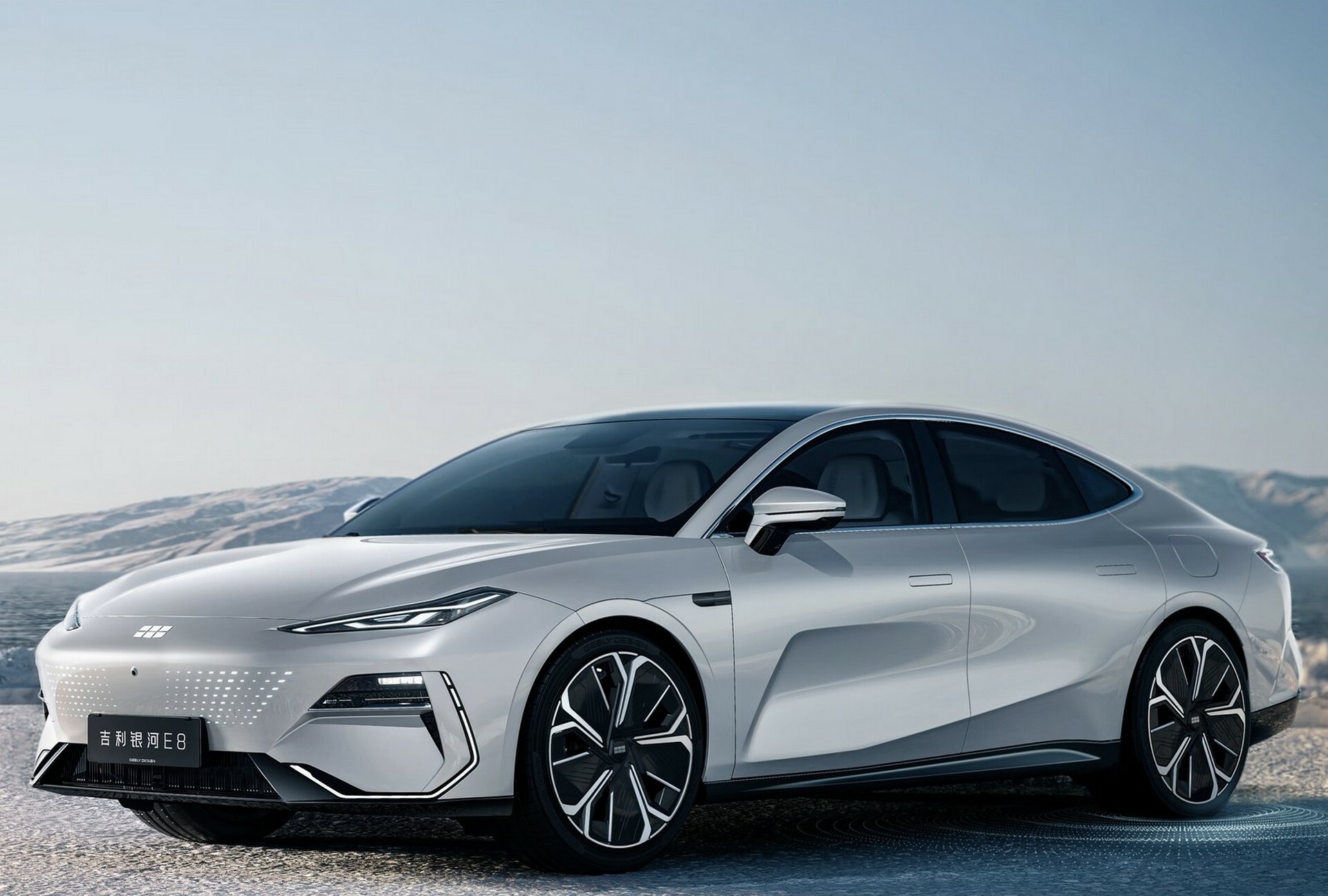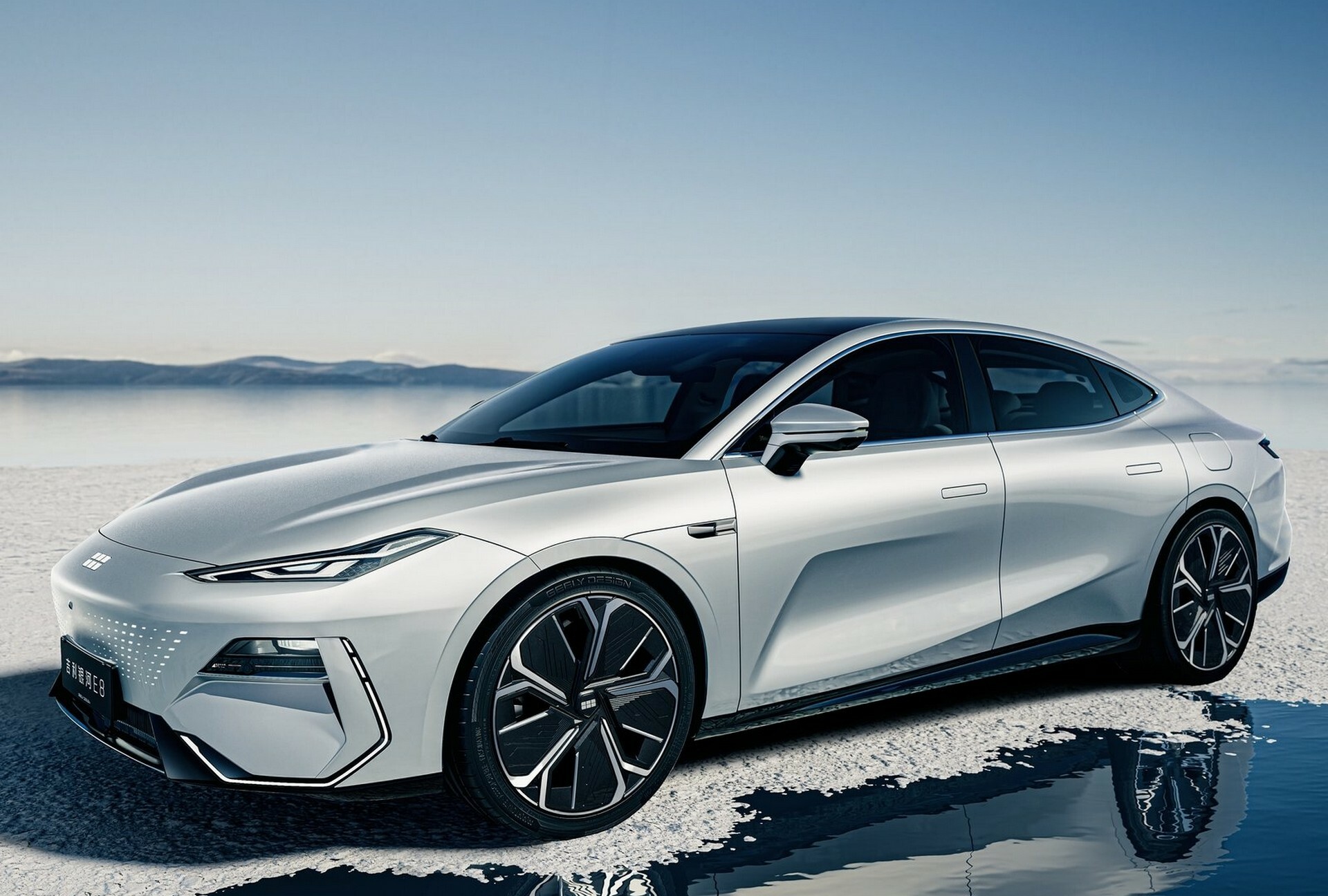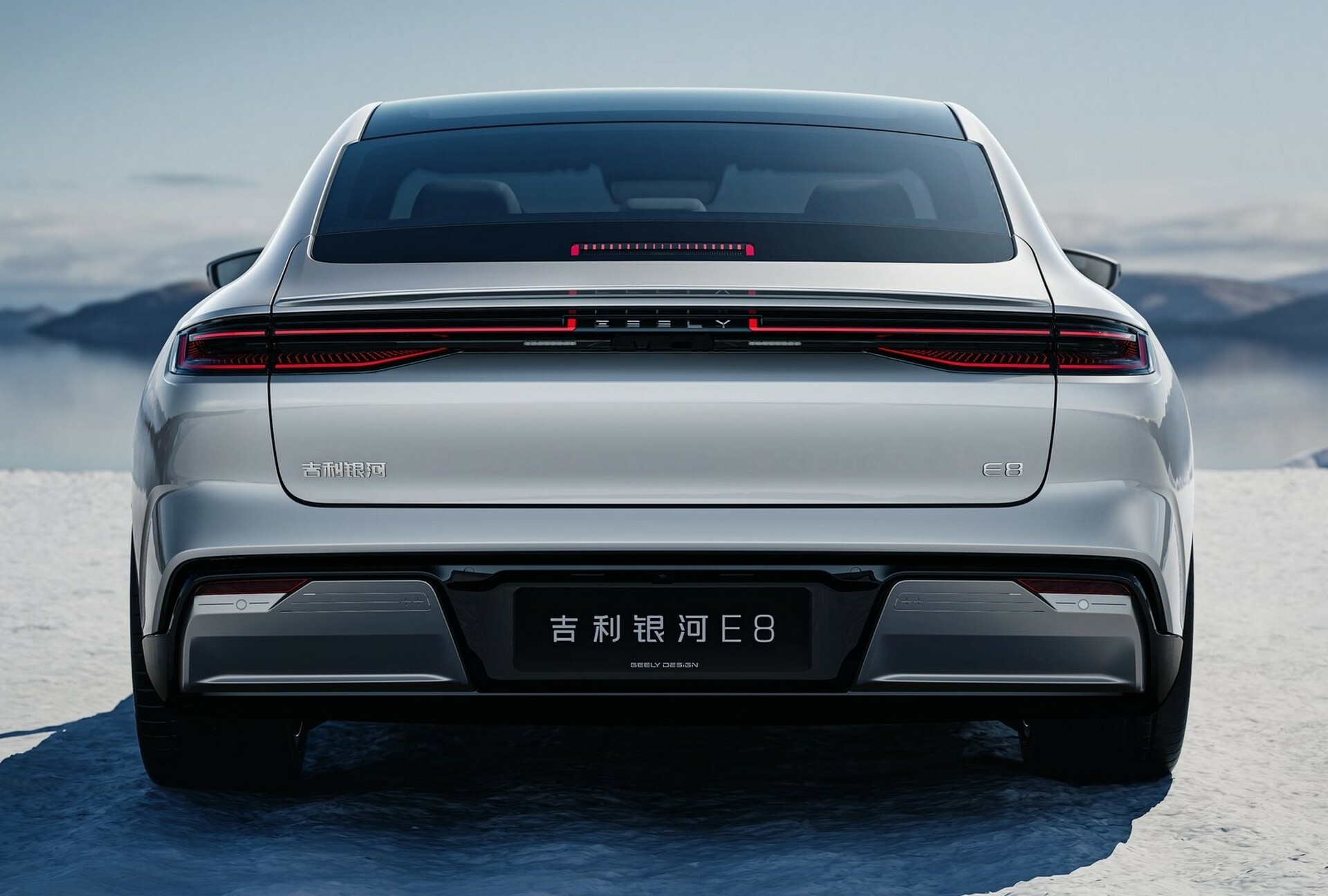Geely’s new Galaxy E8 electric sedan has been unveiled in full prior to pre-sales kicking off on November 17 at the Guangzhou Auto Show. The E8 is a compelling sedan from Geely’s new Galaxy brand and will serve as a rival to the BYD Han EV.
Underpinning the Galaxy E8 is Geely’s Sustainable Experience Architecture (SEA) platform with it measuring 5,010 mm (197 inches) long, 1,920 mm (75.6 inches) wide, and standing 1,465 mm (57.7 inches) tall while sporting a 2,925 mm (115.1-inch) wheelbase. The sleek shape of the sedan immediately catches the eye and it’s not all about aesthetics either. In fact, local media reports the E8 has a drag coefficient of just 0.199, matching the odd VW XL1 and meaning it is more slippery than the class-leading Mercedes-Benz EQS with its 0.202 coefficient of drag and the Nio ET7 with its 0.208 Cd.
The front end of the car lacks a traditional grille but does sport a pair of sharp headlights and intricate daytime running lights. Unsurprisingly, the sides are free of any superfluous parts that could disrupt the airflow meaning there are just some simple lines and pop-out door handles. Interestingly, Geely has been able to achieve the car’s low coefficient of drag without fitting door-mounted rear-facing cameras, opting for traditional wing mirrors.
Read: Geely Debuts New Galaxy Electrified Brand With L7 SUV And Light Coupe-Sedan Concept
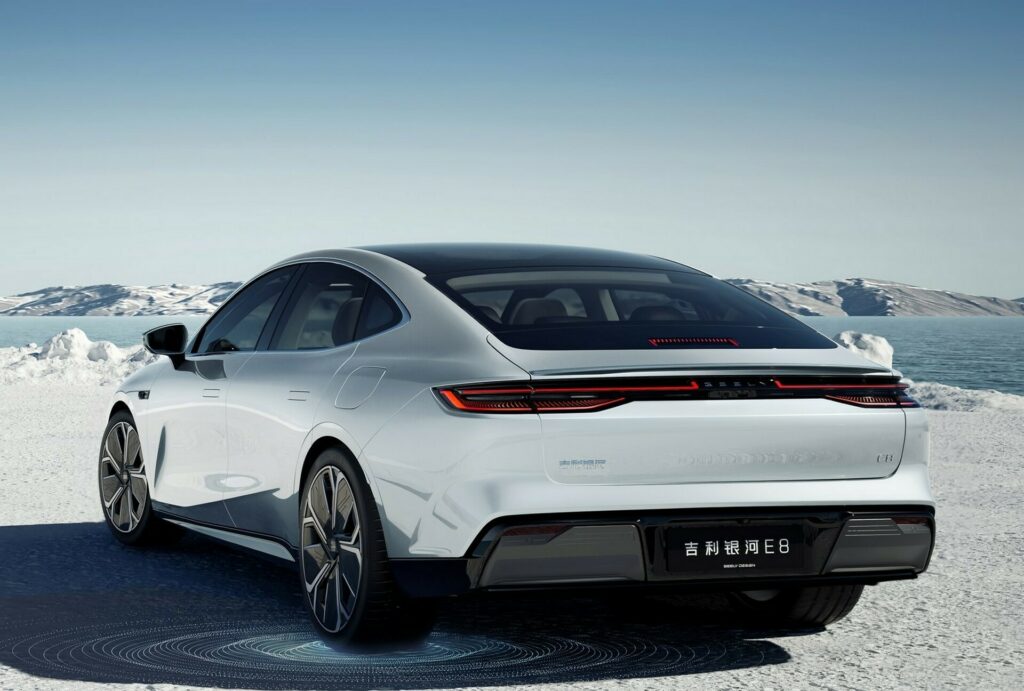
Like so many other new electric vehicles hitting the market, the rear end of the Galaxy E8 isn’t particularly compelling nor unique. Its most striking element is an LED light bar and intricate taillights made up of hundreds of individual LEDs.
The cabin is a little more noteworthy. For example, a massive 8K resolution 45-inch display stretches the full width of the dashboard. The Galaxy E8 also has a flat-bottom and flat-top steering wheel and a simple center console with six buttons, a round dial, a wireless charging pad, and a split storage cubby. Other standard features include ambient lighting and a panoramic sunroof.
Two 400-volt versions are available. The first packs a 62 kWh LFP battery, a 272 hp rear electric motor, and 550 km (342 miles) of range. A version with the same 272 hp motor but a larger 76 kWh battery pack is also available and boosts the EV’s range to 665 km (413 miles). Topping out the range is an 800-volt version with a 224 hp front motor, a 421 hp rear motor, and a 76 kWh pack. This version can also travel 665 km (413 miles) on a charge.



